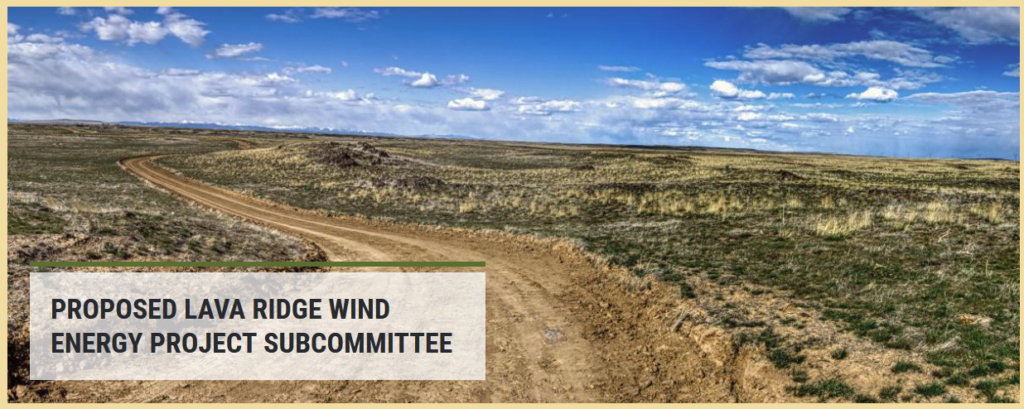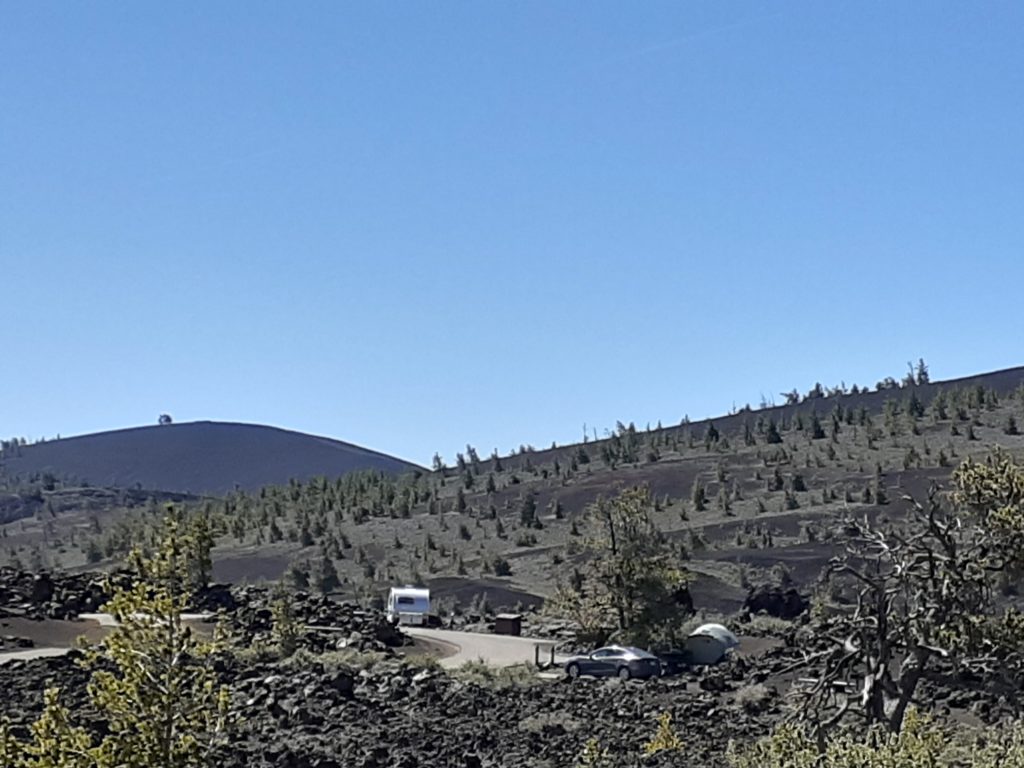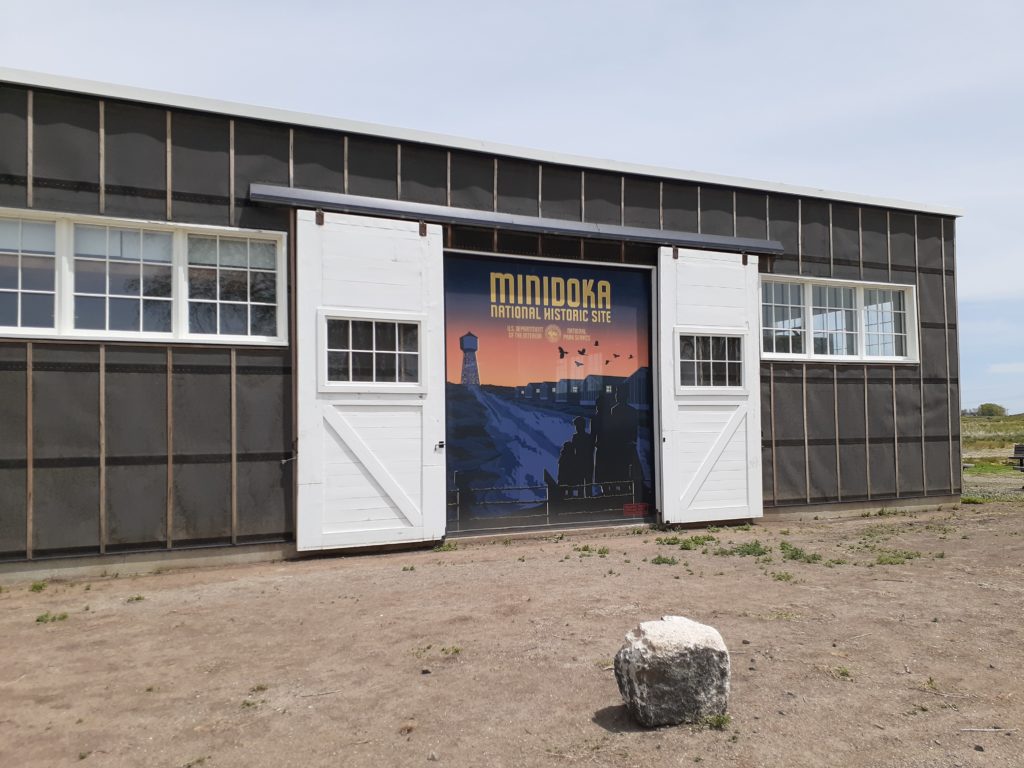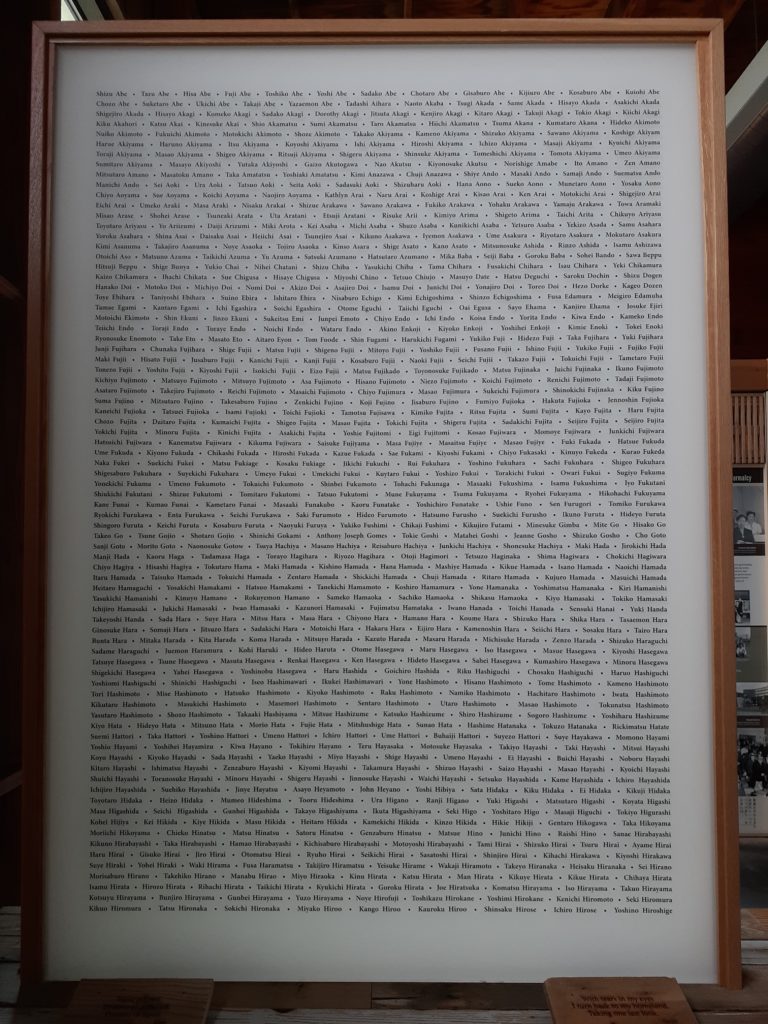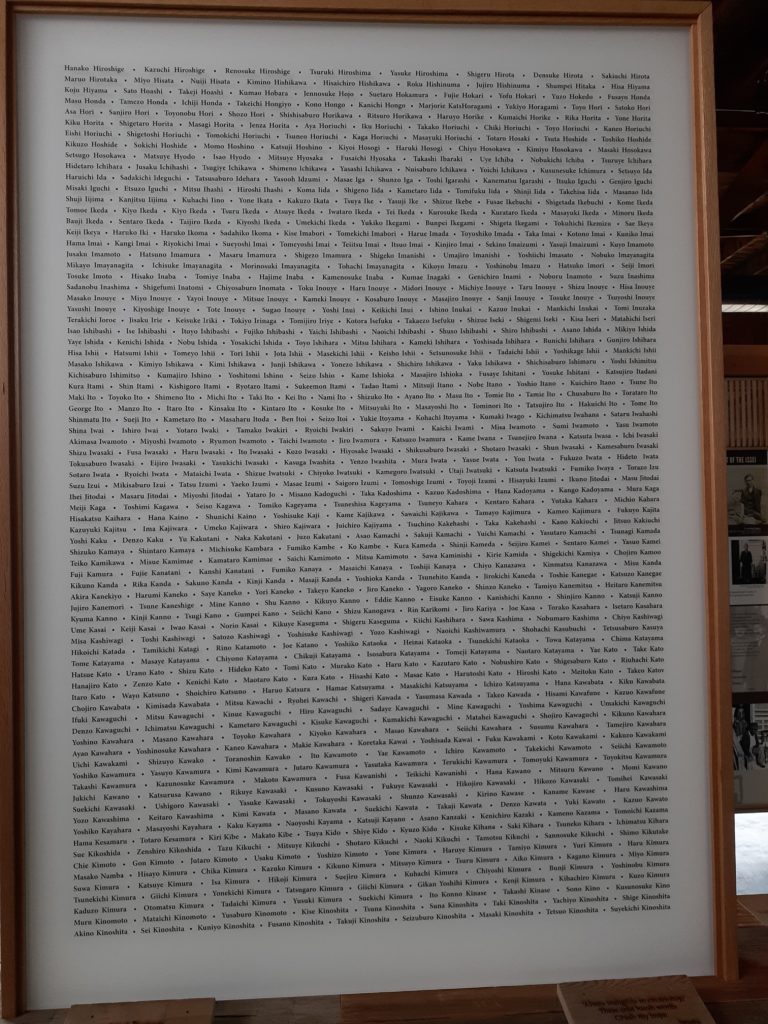Notice of BLM Lava Ridge meeting
August 22nd, 2022
As we left our Craters of the Moon Nat’l Monument campsite in Idaho in May…
… and headed southeasterly, on the way to the rather new Minidoka Nat’l Historic Site, Alan discovered that there was a Lava Ridge wind project proposed for the area.

Here’s today’s notice from BLM:
Details:
Thursday, August 25, 2022
9:00 a.m. – 5:00 p.m. Mountain Daylight Time
Virtual via Zoom – Zoom Registration
The first meeting was on July 7, 2022:
View the recorded meeting here
A MUST visit — Minidoka National Historic Site
June 1st, 2022
When we left Craters of the Moon Nat’l Monument and Preserve, we learned Minidoka National Historic Site was on the way out of Idaho, so of course we headed to Jerome, Idaho. It’s a memorial documenting the U.S. internment of Japanese citizens and issei (first generation Japanese immigrants who the “U.S.” determined were unable to become citizens). When we toured Manzanar in 2017, which needs to be on everyone’s go-to list, I got a copy “By Order of the President: FDR and the Internment of Japanese Americans,” written by Greg Robinson, focused on Executive Order 9066 and rounding up of Japanese without due process, without notice, where families lost everything, EVERYTHING, and were in these concentration camps for years, in some cases, having to build the camps, as they were in remote locations, and nothing was there!

It’s really disturbing that this IS how we treat people in this country. It’s doubly disturbing when we see familiar names on the list, in this case, the Issei Memorial of those imprisoned at Minnedoka:
These are lessons we need to know, and never repeat. Yet back in 2017, when we toured Manzanar National Historical Site, the then “President” was issuing hateful and discriminatory Muslim ban Executive Orders, starting with EO13769, to prevent entry to the U.S. Deja vu all over again.
The Minidoka National Historic Site is quite new, and it looks like it’s under development, more to come. There’s a strong tie with this location to the Bainbridge Island round-up, where Japanese first were sent to Manzanar, and then to Minidoka. There’s more info on Bainbridge Island that HERE (though this site is odd, the wording/language used is a little to “happy.” From the site, “children and adults alike will enjoy this delightful local museum” ummmmm, there’s nothing delightful about forced “evacuation” and incarceration.)
Manzanar – Information on Japanese American Internment
February 27th, 2017

Internment of Japanese Americans was all too real, and it’s a shameful part of American history that we all should know more about. Yeah, I’ve been posting a lot about this, the intentional and orchestrated buildup of hate and racism leading to Executive Order 9066. I knew about it before I went, but actually being there, it hit home in a profound way that isn’t captured by words, particularly when we’re seeing a similar intentional and orchestrated buildup of hate and racism today.
Manzanar National Historical Site
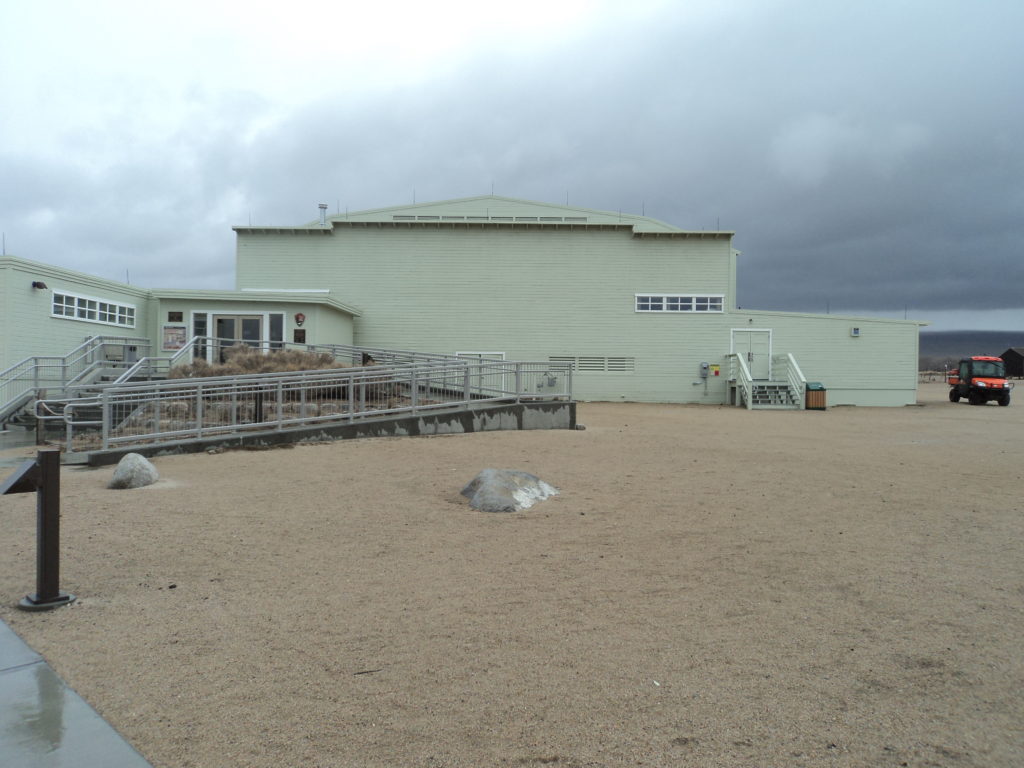
This is the original large hall build by prisoners. It became the focal point of the camp, a gathering spot, even a theater and dance hall — attempts to have some semblance of “normal” life, though captive.
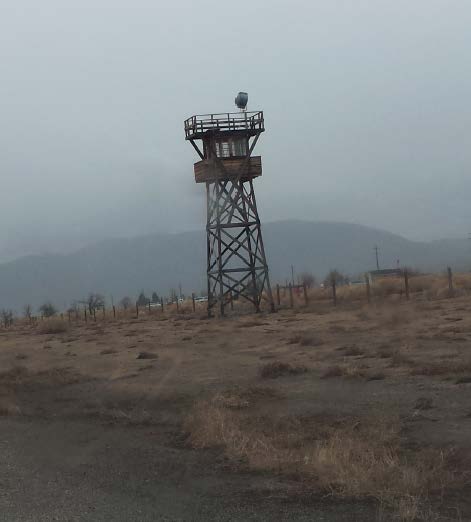
How to research family specifics? Here’s a page from the National Park Service on how to research families held in internment camps across the US:
The arguments for internment were not rational, and evidence presented to Pres. Roosevelt in reports he requested to assess threat to US of Japanese Americans found uniformly that there was no threat. Those reports of “no threat” were turned around with this statement below, turned around, much like today where the recent terroristic events were NOT from the 7 countries of tRump’s Muslim Ban:
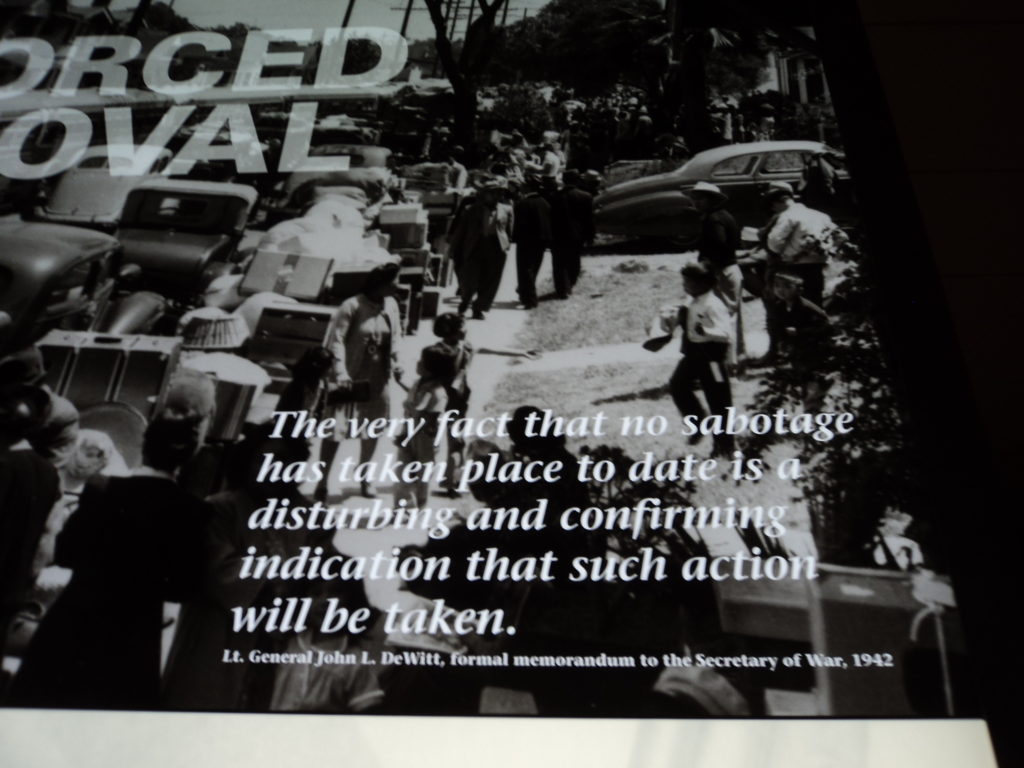
Really… “The very fact that no sabotage has taken place to date is a disturbing and confirming indication that such action will be taken.” WHAT?!?!?!
On a large wall, from the high ceiling to the floor, there’s a long, long list of families interred, a graphic image of the broad impact, looking up to the top is dizzying:

And notebooks listing the families, information about them, and where they went when they left:

There’s a oral history project ongoing, and the National Park Service is collecting this history through interviews, sharing documents, family items, to convey the experience of internment and preserve it to help us learn about our country. Here’s a booklet with information on participating in this project:
It took over 40 years for the U.S. to admit this grievous wrong, apologize and offer modest reparations. An NPR report:
From Wrong To Right: A U.S. Apology For Japanese Internment
Now, rather than do this all over again, rather than be wrong, wrong, wrong, let’s just get it right from the start and rescind the Muslim ban (Executive Order 13769).
